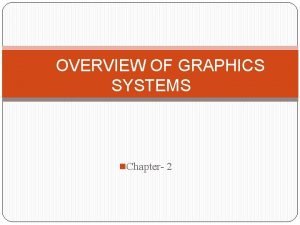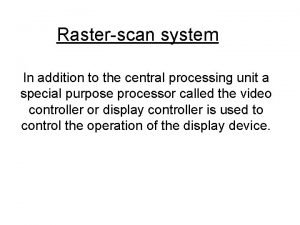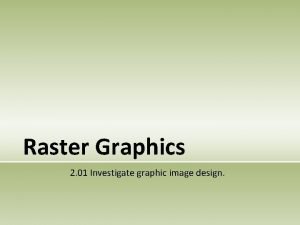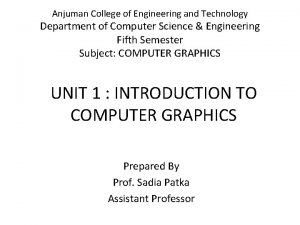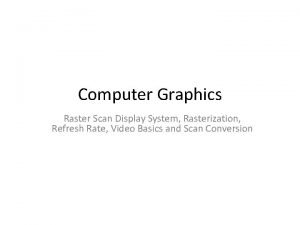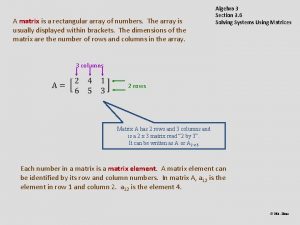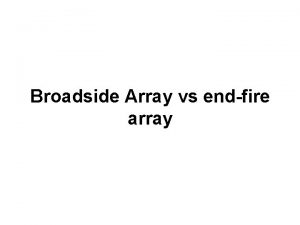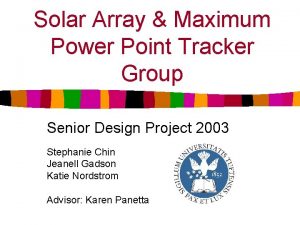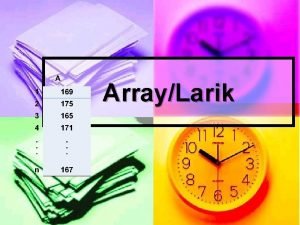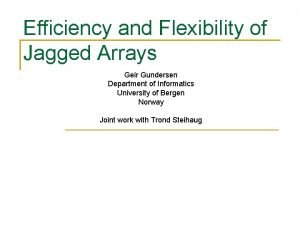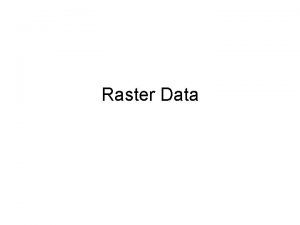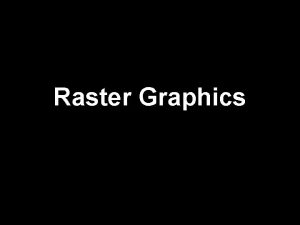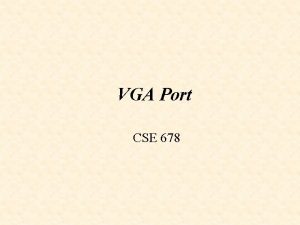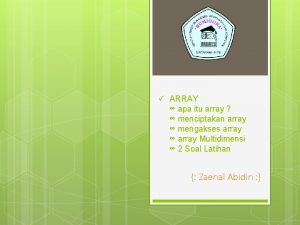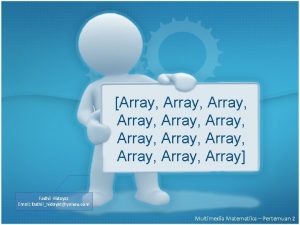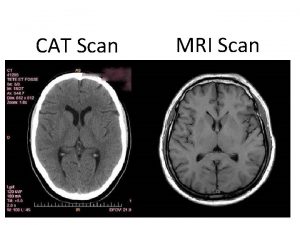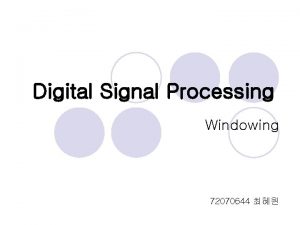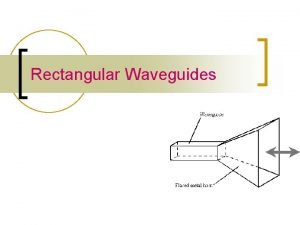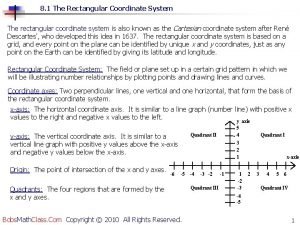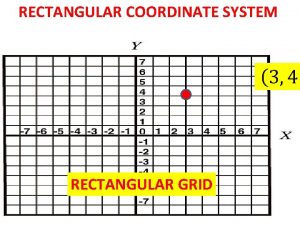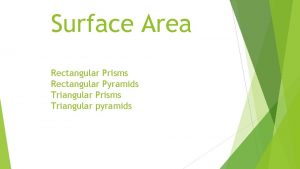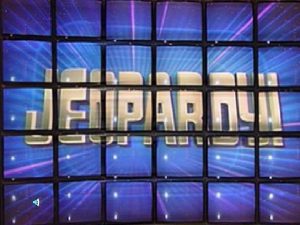Raster Scan Displays Raster A rectangular array of




















- Slides: 20

Raster Scan Displays • • • Raster: A rectangular array of points or dots Pixel: One dot or picture element of the raster Scan Line: A row of pixels

Raster Scan Displays • In a raster scan system, the electron beam is swept across the screen, one row at a time from top to bottom.

Raster Scan Displays • • As the electron beam moves across each row, the beam intensity is turned on and off to create a pattern of illuminated spots. Picture definition is stored in a memory area called the refresh buffer or frame buffer.

Raster Scan Displays

Raster Scan Displays • • Refresh buffer or frame buffer: This memory area holds the set of intensity values for all the screen points. Stored intensity values then retrieved from refresh buffer and “painted” on the screen one row (scan line) at a time

Raster Scan Displays • • Intensity range for pixel positions depends on the capability of the raster system. A black-and-white system: each screen point is either on or off, so only one bit per pixel is needed to control the intensity of screen positions. On a black-and-white system with one bit per pixel, the frame buffer is called bitmap. For system with multiple bits per pixel, the frame buffer is called pixmap.

Raster Scan Displays • Sometimes, refresh rates are described in unit of cycles per second, or Hertz (HZ) • Refreshing on raster scan displays is carried out at the rate 60 to 80 frame per second.

Raster Scan Displays • • Horizontal retrace: The return to the left of the screen, after refreshing each scan line. Vertical retrace: At the end of each frame (displayed in 1/80 th to 1/60 th of a second) the electron beam returns to the top left corner of the screen to begin the next frame.

Interlacing • On some raster systems (TV), each frame is displays in two passes using an interlaced refresh procedure.

Interlacing • • On an older, 30 frame per-second, noninterlaced display, some flicker is noticeable. With interlacing, each of the two passes can be accomplished in 1/60 th of a second. An effective technique for avoiding flicker The quality of a raster image is determined by the total number pixels (resolution), and the amount of information in each pixel (color depth)

Raster image • Raster graphics cannot be scaled to a higher resolution without loss of apparent quality.

Random Scan Displays

Random Scan Displays • • Random scan display is the use of geometrical primitives such as points, lines, curves, and polygons, which are all based upon mathematical equation. Raster Scan is the representation of images as a collection of pixels (dots) In a random scan display, a CRT has the electron beam directed only to the parts of the screen where a picture is to be drawn. Random scan monitors draw a picture one line at a time (Vector display, Stroke –writing or calligraphic displays).

Random Scan Displays • • • Refresh rate depends on the number of lines to be displayed. Picture definition is now stored as a line-drawing commands and an area of memory referred to as refresh display file (display list). To display a picture, the system cycle through the set of commands in the display file, drawing each component line in turn.

Random Scan Displays • Random scan displays are designed to draw all the component lines of a picture 30 to 60 times each second.

Random Scan Displays • Random scan displays are designed for linedrawing applications and can not display realistic shaded scenes.

Random Scan Displays

Random Scan Displays • Random scan displays have higher resolution than raster systems. • • Vector displays product smooth line drawing. A raster system produces jagged lines that are plotted as discrete points sets. Raster

Random Scan Displays • A raster system produces jagged lines that are plotted as discrete points sets. Raster

Random Scan Example • • Advantages: This minimal amount of information translates to a much smaller file size. (file size compared to large raster images) On zooming in, and it remains smooth The parameters of objects are stored and can be later modified (transformation).
 Raster and random scan
Raster and random scan Cathode ray tube in computer graphics
Cathode ray tube in computer graphics The frame rate of a random scan architecture is 60-80 hz
The frame rate of a random scan architecture is 60-80 hz Refresh crt consist of
Refresh crt consist of Digital raster graphic
Digital raster graphic Architecture of simple raster graphics system
Architecture of simple raster graphics system Digital raster graphic image
Digital raster graphic image Polygonal check and raster scan check are types of
Polygonal check and raster scan check are types of Raster scan gif
Raster scan gif Architecture of raster scan display
Architecture of raster scan display Raster scan display system in computer graphics
Raster scan display system in computer graphics What is identity matrix
What is identity matrix Rectangular array definition
Rectangular array definition Pengertian array 1 dimensi
Pengertian array 1 dimensi Endfire array
Endfire array Photovoltaic array maximum power point tracking array
Photovoltaic array maximum power point tracking array Lga vs pga socket
Lga vs pga socket Apa itu menginisialisasi
Apa itu menginisialisasi Jagged array
Jagged array Cara menentukan array 2 dimensi dan 3 dimensi
Cara menentukan array 2 dimensi dan 3 dimensi Suatu array dikatakan upper triangular jika
Suatu array dikatakan upper triangular jika


